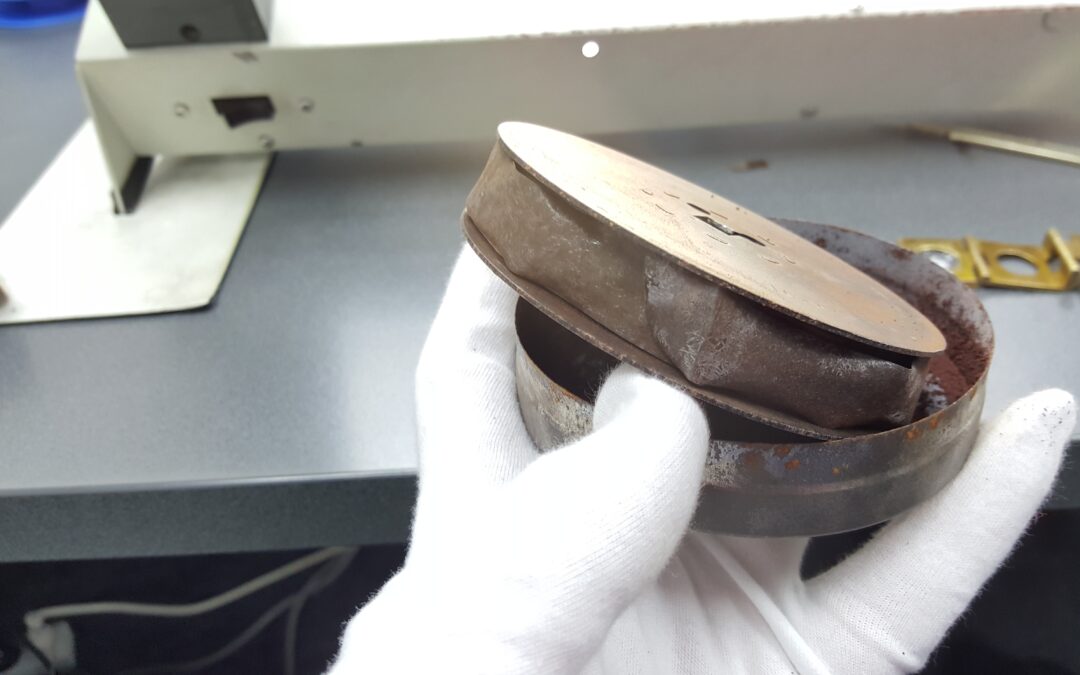Microforms, such as microfilm, microfiche and aperture cards will deteriorate over time due to factors like aging, moisture, and handling.
- Ageing: Microforms are typically made of cellulose acetate, which are susceptible to ageing. Overtime, the base material can degrade and become brittle, leading to cracking, tearing, or disintegration.
- Moisture and Humidity: Excessive moisture and high humidity levels can cause microforms to absorb water, leading to swelling, warping, mold growth.
- Temperature Extremes: Extreme temperatures, both hot and cold, can have detrimental effects on microforms. High temperatures can accelerate the degradation process, while freezing temperatures can make the base material more brittle and susceptible to damage.
- Chemical Reactions: Microforms can undergo chemical reactions over time. One common deterioration process is the ‘vinegar syndrome’, which occurs in cellulose acetate films. It involves the breakdown of the film’s base material, resulting in a vinegar-like odor, shrinkage, and loss of image quality.
Digitisation helps preserve the content by creating a digital copy that can be stored and accessed without the risk of physical degradation. It offers many benefits – preservation, enhanced accessibility, searchability, space efficiency, and improved image quality. It allows you to unlock the potential of your microform collection, ensuring its long-term usability.
DatacomIT understands the importance of digitising microform
DatacomIT has extensive expertise and experience in microform digitisation. We have been providing digitisation services for over 40 years, and our technology ensures accurate and high resolution scanning, resulting in clear and readable digital images.
If unsure of the condition of your microform and require professional advice, please contact DatacomIT on 1300 887 507 or info@datacomit.com.au to learn more about digitisation, security and peace of mind.
CASE STUDY
DATACOMIT DIGITISED 500,000+ MICROFORM FOR AUSTRALIAN COUNCILS

